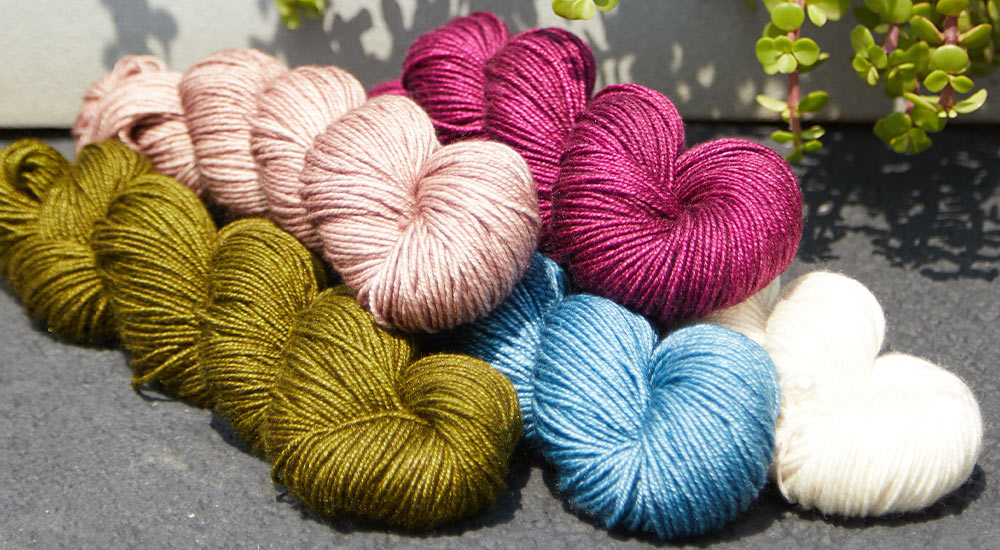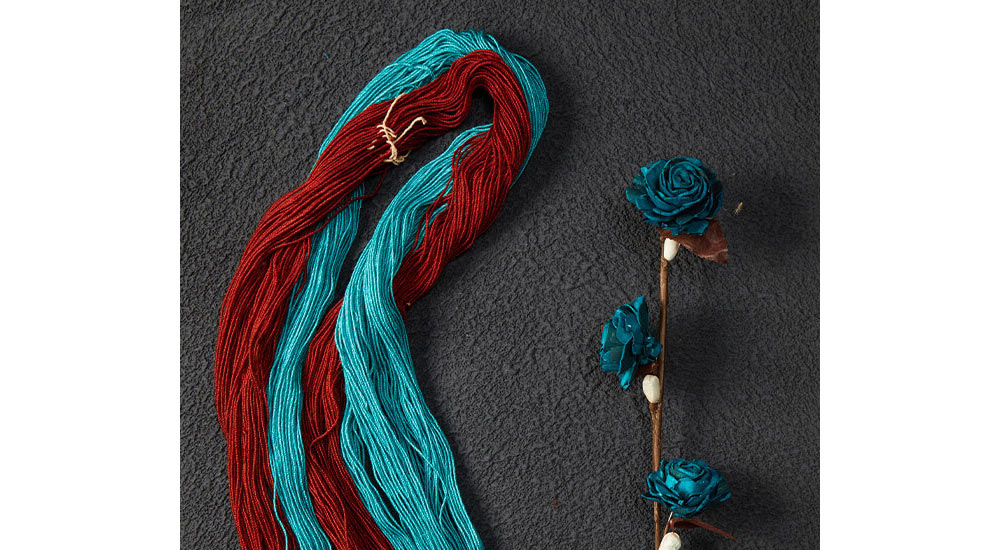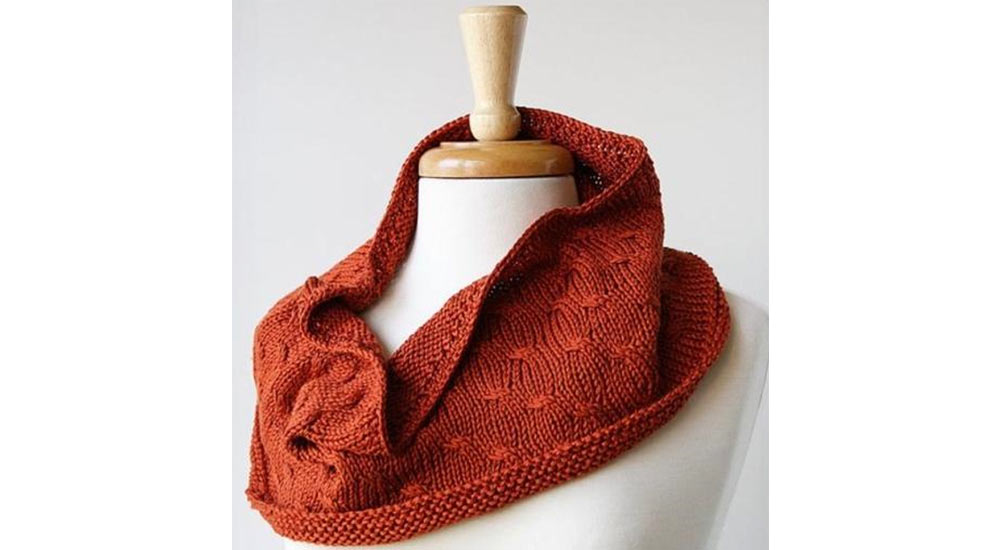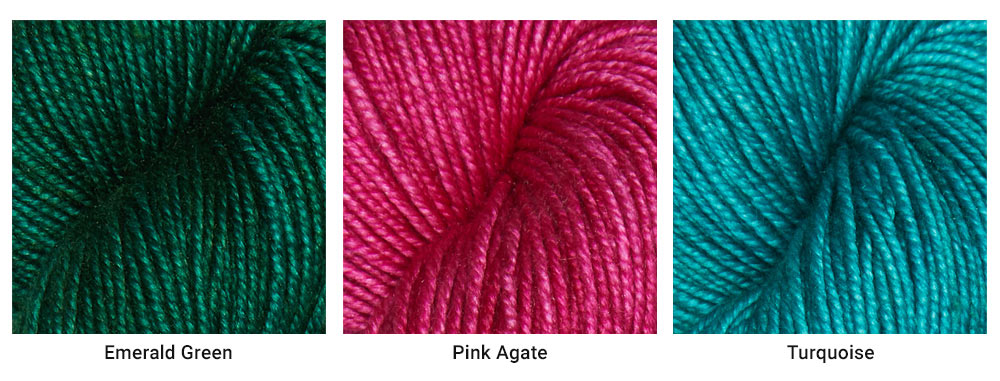Knitting with Silk Yarns
- Blog Views : 122
- Symfonie Yarns
- 19Jul, 2023

Among yarns, there are a few stand-out top-tier fibers that command attention for their purity, softness and cost. Silk is an example of one. The Symfonie collection of yarns contains a yarn that is a blend of fine-grade merino and silk, a lovely blend that is a good choice for shawls and special items where the shimmer of silk adds to the beauty of the finished project.
Working with silk, caused us to consider what is involved in creating and caring for a silk yarn. So, here’s a brief look at what goes into the making of this magical material. Even though it’s not strictly derived from animal hair or shearing, silk is classified as an animal fiber since it comes from a living creature: the cocoon of the silkworm.
How Its Made
To make the finest silk, the silkworm cocoon is harvested before the worm breaks free and becomes a moth. The cocoons are boiled, and the filaments that result are unraveled. While still wet, anywhere from 40 to 50 filaments are twisted into a single silk thread. They are then rolled into a hank before they are washed, bleached, and dyed. It’s a laborious and time-consuming process. It takes approximately 5,500 silkworm cocoons to produce one pound of silk. You can see why silk yarn for knitting is one of the most expensive fibers on the market.

Knitting with Silk
Silk is superb for lightweight projects like shawls, summer tops, and lightweight scarves, but it’s a delicate fiber. While you would not want to use it for a garment or item that gets a lot of everyday use, it’s so beautiful that it is well worth considering for something (or someone) special. Here is a list of its advantages:
- It drapes well so it’s ideal for shawls, summer knits,
- It takes dye beautifully, resulting in a luxuriant sheen
- It’s resistant to shrinkage and moths
- It doesn’t pill
- It’s smooth
- It has strength
It also has some real disadvantages which every knitter should consider before deciding to knit with it:
- It weakens when it gets very wet.
- It fades easily – especially when exposed to sunlight
- It’s not flexible - like wool
- It’s very expensive
For these reasons, smart yarn producers often use a small percentage of silk, mixed with a stronger material such as cotton or wool to produce finished yarns with the beauty of silk, but with the strength and support of stronger fibers. One such example is Luna, a dk weight yarn containing 25% silk and 75% high-quality merino wool. These two fibers make a beautiful fabric when knitted.
Here is an example of a lovely cowl made from silk yarn. See how luminous the read looks. This would be equally as lovely if done in a silk/wool blend like Luna. You can find many patterns such as this one on Ravelry.com.

Best Needles for Silk Knitting
Because a pure silk yarn is quite slippery, it pays to be careful about which needles you use. You don’t want the stitches to slip off the needle. Smooth metal or plastic may not be the right choice. Instead use a needle that has a little “grip”, such as a wood or bamboo needle. Either of these would be ideal for helping you keep your stitches on track.
It’s easy to tense up and knit more tightly with 100% silk because it can feel soft and drapey in your fingers and cause you to over-compensate by tightening your grip. Silk is also less elastic than wool which can also exacerbate this problem and cause your hand to stiffen up. So, try to relax and not tense your hands while knitting with yarns that contain a lot of silk.
Caring for Silk Knits
Silk requires special care – there is no way around it. Hand washing is a must for all pure silk and most silk blends. Here’s how: Fill a small basin with cool water and a little mild yarn soap. Submerge the garment in the liquid, gently dislodge any stain by swishing the yarn around gently. To rinse the garment, hold it to one side of the basin as you drain the water. Do not pick it up and let it drip over the basin so that you don’t stretch it out. Add cool fresh water. When the water is clear and you’re ready to stop washing, gather the whole garment in your hands, lifting it gently from the water and carefully squeezing out the water. Place the garment on a towel, roll it up, and press out the excess water. Treat it with the care you would any fragile item.

Silk needs to dry on a flat surface – you can put a towel underneath to absorb extra moisture. Do not stretch it - just shape it gently into the correct size. If it is lace, make sure the design is visible by gently arranging the lace pattern to its full advantage. If it’s a shawl or scarf, do not hang it on a hanger. Just remember to lay it flat to dry. Since silk is fragile, do not attempt to block it directly with a steam iron. You can “spray block” it by misting it lightly (if it’s dry) and then letting it air dry.
All in all, we think it’s fair to say that 100% silk is probably not the ideal choice for a beginning knitter or crocheter. If you are new to the craft and want the luxurious beauty of a silky fiber, consider using a silk blend – like Luna. Its combination of pure merino and silk will give you the luxurious soft appearance of silk and help you appreciate the pleasure and ease of knitting a perfectly blended yarn. These are just a few of the wonderful colors you will discover.
-
- 14 Apr,2025
-
- 10 Apr,2025
-
- 07 Apr,2025
-
- 04 Apr,2025
-
- 01 Apr,2025
-
- 28 Mar,2025
Copyright © Symfonie Yarns 2025 - all rights reserved | RSS Feed
